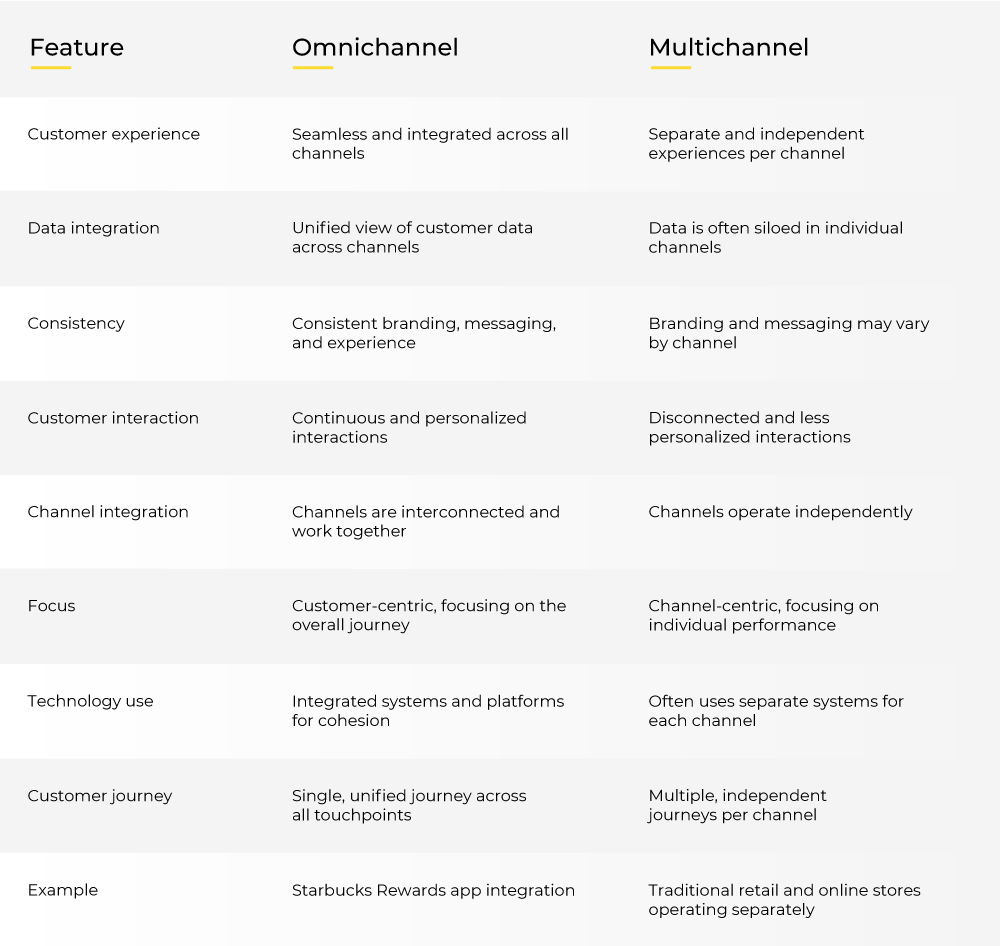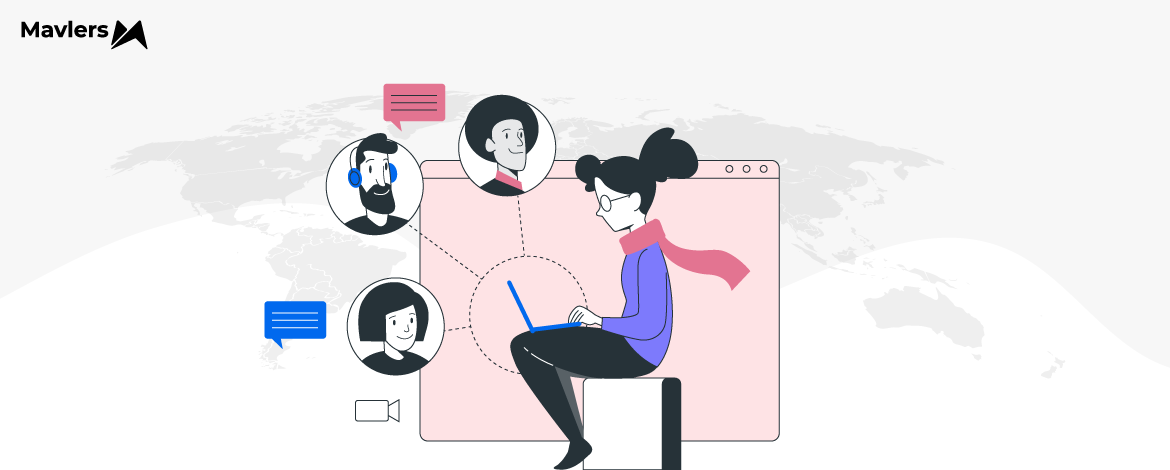As a seasoned marketer, you’ve been hired by a brand to create a curated, consumer-centric marketing experience. They’re not looking for a simple, product or brand-centric multichannel approach.
The idea is to offer prospective and regular buyers a seamless online and offline shopping experience.
This is where the concept of leveraging omnichannel marketing for the brand comes into play.
With a dozen-plus years of experience helping brands develop consistent and cohesive messaging across channels that meet their customers in their buyer’s journey, we at Mavlers have a trick or two to share about successful omnichannel marketing.
In today’s blog, we will walk you through:
- Understanding omnichannel marketing & its importance
- Key elements of successful omnichannel marketing
- Step-by-step guide to implementing an omnichannel marketing strategy
- Omnichannel marketing vs. multichannel marketing
- Best practices in omnichannel marketing
By the end of this blog, you will be well-versed in the concept, benefits, best practices, and components of omnichannel marketing and will be able to execute a well-thought-out omnichannel marketing strategy for your brand like a pro!

Understanding omnichannel marketing & its importance
Omnichannel marketing refers to a multichannel sales approach that provides customers with a seamless shopping experience, whether they’re shopping online from a mobile device, a laptop, or in a brick-and-mortar store.
The key is ensuring the customer journey is integrated and consistent across all channels. Unlike multichannel marketing, where each channel operates in silos, omnichannel marketing interlinks these channels to create a cohesive customer experience.
Why is omnichannel marketing important?
- Customer expectations: Today’s consumers expect personalized, consistent experiences across all platforms. According to a study by Harvard Business Review, 73% of customers use multiple channels during their shopping journey.
- Increased customer loyalty: An effective omnichannel strategy can enhance customer satisfaction and loyalty. A cohesive experience makes it easier for customers to engage with a brand, increasing the likelihood of repeat purchases.
- Higher revenue: Companies with strong omnichannel strategies retain an average of 89% of their customers, compared to 33% of the other respondents. Additionally, customers who interact with multiple channels tend to spend more.
- Better data collection: Omnichannel marketing allows for more comprehensive data collection across all touchpoints. This data can be used to refine marketing strategies and improve customer insights.
Key elements of successful omnichannel marketing
Let’s delve into the key components of a well-curated omnichannel marketing strategy.
1. Unified customer data
To provide a seamless experience, businesses need a single view of the customer. This involves integrating data from various sources, such as CRM systems, social media, email marketing platforms, and in-store transactions.
This unified data helps understand customer behavior, preferences, and purchase history, enabling personalized interactions.
2. Consistent branding and messaging
Consistency is crucial in omnichannel marketing. Your brand’s voice, messaging, and visual identity should be uniform across all channels. This helps in building brand recognition and trust.
For instance, customers should be able to recognize your brand whether they see an ad on Instagram, receive an email, or visit your physical store.
3. Personalization
Personalization is at the heart of a successful omnichannel strategy. Use the unified customer data to tailor your marketing efforts.
Personalized recommendations, targeted emails, and customized content based on customer behavior and preferences can significantly enhance the customer experience.
4. Seamless integration of channels
Ensure that all channels are interconnected. For example, customers should be able to start a transaction on one platform and finish it on another without any disruption.
This might include features like shopping carts that carry over from the web to mobile or checking in-store availability online.
For instance, if your brand sells makeup and your consumers like a particular blush on TikTok, they should be able to buy it or check its availability in-store before they actually visit the store or even online.
5. Responsive customer service
Omnichannel marketing also extends to customer service. Provide support across all channels, whether through live chat on your website, social media, email, or phone.
Ensure your customer service team can access customer data from all channels to provide informed and efficient support.
Now that we understand the concept of omnichannel marketing and its integral components, let’s find out how to execute a foolproof strategy.
Step-by-step guide to implementing an omnichannel marketing strategy
Step 1: Understand your customer journey
Map out the customer journey to understand how customers interact with your brand across different touchpoints. Identify the key channels and the role each plays in the customer’s decision-making process. This will help in creating a more targeted and efficient omnichannel strategy.
Step 2: Integrate your data
Ensure you have the tools and systems to collect and integrate data from all channels. A customer data platform (CDP) can be invaluable in consolidating data from various sources and providing a unified view of the customer.
Step 3: Develop consistent messaging
Create a brand style guide that outlines your brand’s voice, tone, and visual identity. Ensure that all marketing materials, whether digital or physical, adhere to these guidelines. Train your marketing team to maintain consistency across all platforms.
Step 4: Leverage technology
Invest in technology that facilitates omnichannel marketing. This includes CRM systems, marketing automation platforms, and data analytics tools. Ensure these systems are integrated to provide a seamless flow of information.
Step 5: Personalize the customer experience
Use the data collected to personalize your marketing efforts. Segment your audience based on behavior, preferences, and purchase history. Tailor your messaging and offers to meet the specific needs of each segment.
Step 6: Monitor and optimize
Continuously monitor the performance of your omnichannel strategy. Use analytics to track key metrics such as customer engagement, conversion rates, and sales. Use this data to identify areas for improvement and make necessary adjustments.
If you’d still like more clarity on the difference between multichannel and omnichannel marketing, the next section addresses just that.
Omnichannel marketing vs. multichannel marketing
So, people generally tend to misconstrue multichannel marketing to hold the same meaning as omnichannel marketing. However, they are not the same. Let’s look at the major differences between the two.

Best practices in omnichannel marketing
Here is a ready checklist of best practices for a successful and well-integrated omnichannel marketing strategy.
1. Use customer feedback
Regularly seek feedback from your customers to understand their needs and preferences. Gather insights through surveys, reviews, and social media interactions. Implement changes based on this feedback to enhance the customer experience.
2. Optimize for mobile
Ensure that all your digital channels are optimized for mobile. A significant portion of consumers uses mobile devices to browse and make purchases. Mobile optimization includes having a responsive website, mobile-friendly emails, and easy-to-navigate apps.
3. Leverage social media
Social media is a powerful tool in an omnichannel strategy. Use it to engage with customers, promote products, and gather feedback. Ensure that your social media channels are integrated with other marketing platforms for a seamless experience.
4. Provide omnichannel customer support
Offer customer support across all channels. Ensure that your support team can access customer data from all touchpoints to provide informed and efficient assistance. Consider implementing chatbots for instant support on digital platforms.
5. Measure and analyze
Measure the effectiveness of your omnichannel strategy regularly. Use KPIs such as customer retention rate, average order value, and customer lifetime value to assess performance. Use this data to refine and optimize your strategy.
The road ahead
If you want to learn more about the role of email marketing in omnichannel marketing, you should read our blog next!


Naina Sandhir - Content Writer
A content writer at Mavlers, Naina pens quirky, inimitable, and damn relatable content after an in-depth and critical dissection of the topic in question. When not hiking across the Himalayas, she can be found buried in a book with spectacles dangling off her nose!
An All-inclusive Guide to Internal Linking Tools in WordPress: Strategies, Plugins and Actionable Tips
Why Headless Websites Matter: Transforming Your Online Presence